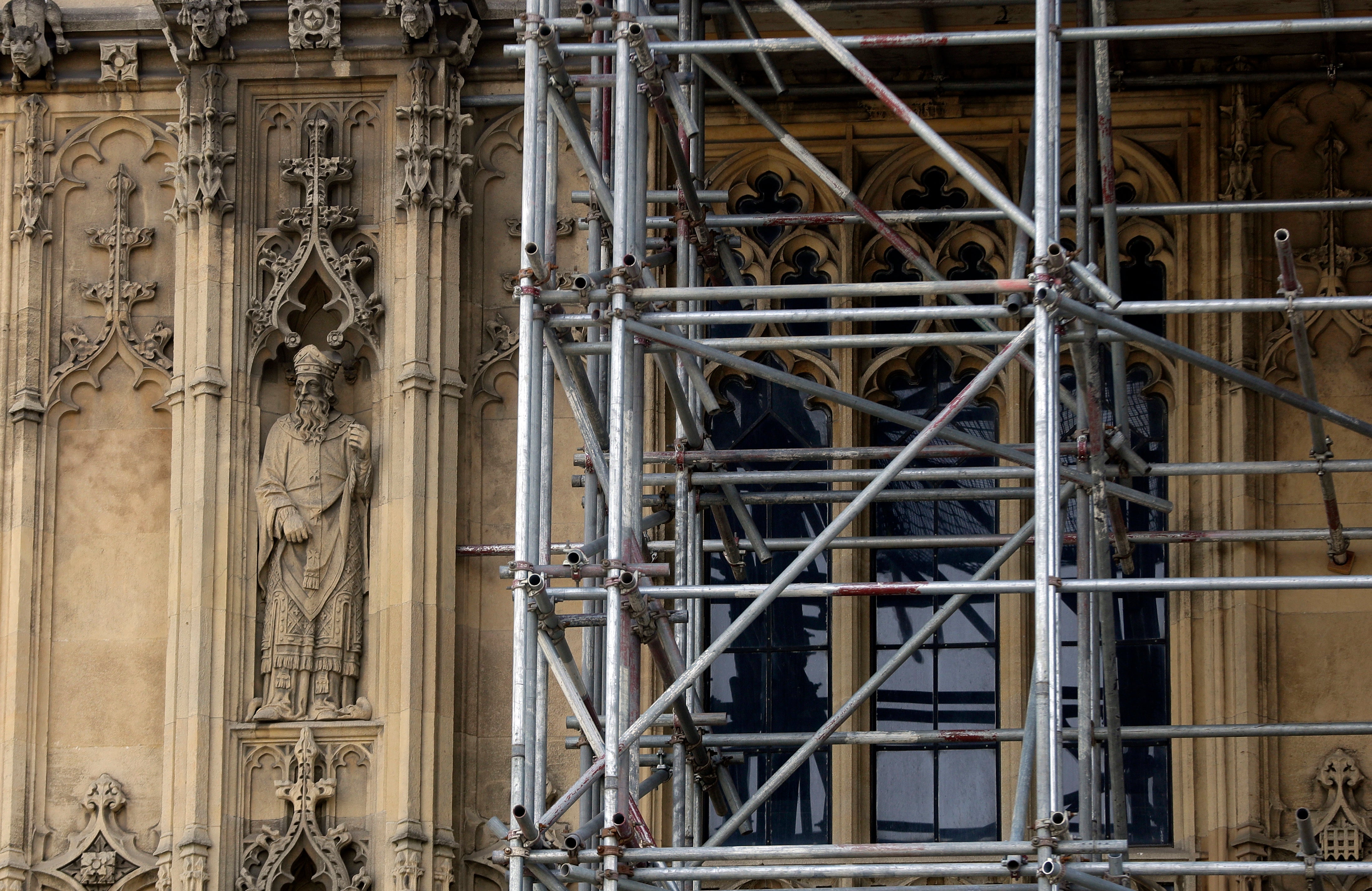Westminster’s biggest problem is that it’s falling down
A disastrous fire in parliament would be a sad symbol of Britain, says Sean O’Grady


The powerful House of Commons public accounts committee (PAC) warns that there is a risk parliament could be destroyed by a “catastrophic incident” before repair works are carried out. It says there is a “critical need” to restore the building. Not only is it an internationally celebrated emblem of Britain – and democracy – but there is a growing list of health and safety incidents, some involving asbestos.
The clerks of both houses of parliament “finally seem to acknowledge publicly the enormity of this task, for which they are now personally accountable”, the PAC says in its report. But the process has suffered from “years of procrastination”, it adds, and from the focus having been on the convenience of sentimental MPs rather than the thousands of staff and visitors who use the building.
Is it a problem if parliament falls down?
Joking aside, our parliament is crumbling and is about to collapse or else be burned to the ground. Parts of it date back to medieval times. Problems include leaking roofs and windows, outdated and sometimes audibly crackling wiring, ancient heating and sewage systems, residual asbestos, and crumbling stonework.
The disastrous fire at Notre-Dame in Paris in 2019 – leaving aside the earlier ones at Hampton Court in 1986 and Windsor Castle in 1992 – prompted a flurry of activity, given the obvious dangers. Mindful of the risks, parliament passed legislation to set up an elaborate (managerial) structure involving two separate bodies to make proposals and organise the work. Sadly, the ideas generated by these bodies didn’t find favour, and they were abolished. Now, the personal responsibility for getting things fixed has, oddly, been placed on two senior officials, the Clerk of the House of Commons and the Clerk of the Parliaments. However, neither has the power to force anything through.
The PAC calls it “incredible” that, five years after the House determined a course of action, questions about what a restored palace might look like and how the work will be undertaken remain unanswered.
The chair of the PAC, Meg Hillier, adds: “Given the uncertainties over how the clerks will manage their legal responsibilities, who will really be held responsible and accountable if the unthinkable happens? In response to this report, the PAC expects a lot more clarity on those critical issues and, finally, a clear indication of the cost and timeline for getting this massive job done before it becomes too late to do so.”
Has anything like that happened before at Westminster?
Embarrassingly, twice. An original royal palace on the site next to the river and opposite Westminster Abbey, dating from the 11th century, was destroyed by fire in 1512. What was left, including the magnificent Westminster Hall, found a use as the parliament of England, until another fire consumed much of the rest of it in 1834. The “new” building, Pugin’s neo-Gothic masterpiece, was started in 1840 and completed in 1876 (and went way over budget).
Why hasn’t anything been done?
Parliament faces a classic democratic dilemma. It costs a great deal of money just to keep the existing Palace of Westminster running – £2m a week – and the place is obviously dangerous, with bits of masonry falling off and the constant risk of fire and/or collapse. But MPs like working there, and are reluctant to move out (though their continued presence would make renovation more difficult, and slower, and therefore more costly). Furthermore, they balk at having to tell their constituents that it might cost them £14bn to sort the structure out. The House authorities, government and members of parliament have rejected every option so far (rather like the “indicative votes” in the Brexit debates under Theresa May). In a spirit of cakeism – wanting renovation, but also to continue to be in residence – they have opted to do nothing.
What happens if nothing is done?
Someone could get hurt, and a UN world heritage site could be razed to the ground. Quite apart from the possible danger to life and limb, the loss of precious artworks, heritage, architecture, original vellum acts of parliament and plenty of history, the sight of the ancient building reduced to a smouldering ruin would be a sorry symbol of the low ebb to which Britain has sunk. It would have none of the stubborn defiance captured in the images of Winston Churchill inspecting the damage after its bombing by the Luftwaffe in 1941; this would instead have been a product of contemporary British incompetence, and of a catastrophic failure to take tough decisions and stick to them. Sounds familiar.
What are the more radical solutions?
The sensible thing would be to abandon the building for some years while remedial works and modernisation are carried out, and use alternative accommodation of some kind, in London or far away from it. Apart from an original plan a couple of years ago to requisition and build a chamber in York House, the old Department of Health building on Whitehall, there are many other possible locations in London to which parliament’s activities could be relocated. Church House, for example, was used as the Lords’ chamber after the Commons took a direct hit in the Second World War. Then there’s the QE2 Conference Centre and the Methodist Central Hall nearby (the latter the site of the first meeting of the UN General Assembly).
A still more radical move would be to shift the whole circus out of the capital permanently, to new, purpose-built accommodation somewhere towards the centre of the UK, using either a geographic or a demographic definition. Thus a new home for parliament might be situated in, say, Coalville, Tamworth or Doncaster. The “levelling up” benefits are obvious; and of course, our peers and MPs would be out of the notorious Westminster bubble and closer to the elusive “real world”. The old palace could then be given over to tourists, or turned into social housing.
What happens next?
Before the end of this year, the parliamentary Restoration and Renewal Client Board expects to return and agree a way forward for the programme. It will then present a business case to parliament for approval in 2024 or 2025, setting out the preferred option for undertaking the work and what the restored Palace of Westminster will look like. The chances are, though, that this process will be overtaken by the general election and a change of administration.
Subscribe to Independent Premium to bookmark this article
Want to bookmark your favourite articles and stories to read or reference later? Start your Independent Premium subscription today.






Join our commenting forum
Join thought-provoking conversations, follow other Independent readers and see their replies
Comments